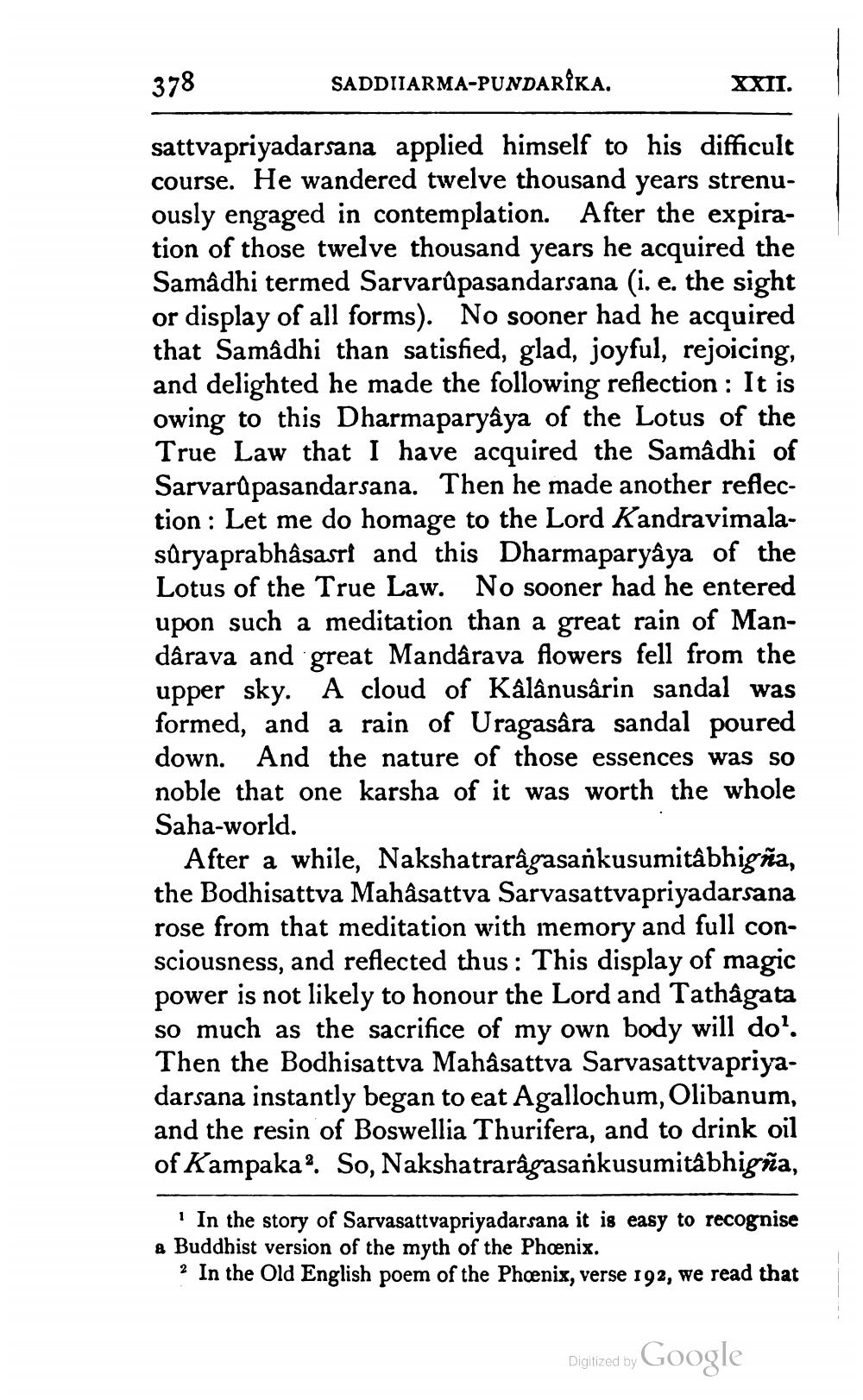________________
378
SADDIIARMA-PUN
XXII.
sattvapriyadarsana applied himself to his difficult course. He wandered twelve thousand years strenuously engaged in contemplation. After the expiration of those twelve thousand years he acquired the Samadhi termed Sarvarûpasandarsana (i. e. the sight or display of all forms). No sooner had he acquired that Samadhi than satisfied, glad, joyful, rejoicing, and delighted he made the following reflection : It is owing to this Dharmaparyaya of the Lotus of the True Law that I have acquired the Samadhi of Sarvardpasandarsana. Then he made another reflection: Let me do homage to the Lord Kandravimalasûryaprabhâsasrt and this Dharmaparyâya of the Lotus of the True Law. No sooner had he entered upon such a meditation than a great rain of Mandârava and great Mandarava flowers fell from the upper sky. A cloud of Kalânusârin sandal was formed, and a rain of Uragasâra sandal poured down. And the nature of those essences was so noble that one karsha of it was worth the whole Saha-world.
After a while, Nakshatrarâgasankusumitâbhigña, the Bodhisattva Mahâsattva Sarvasattvapriyadarsana rose from that meditation with memory and full consciousness, and reflected thus: This display of magic power is not likely to honour the Lord and Tathâgata so much as the sacrifice of my own body will do?. Then the Bodhisattva Mahâsattva Sarvasattvapriyadarsana instantly began to eat Agallochum, Olibanum, and the resin of Boswellia Thurifera, and to drink oil of Kampakaļ. So, Nakshatrarâgasankusumitâbhigña,
In the story of Sarvasattvapriyadarsana it is easy to recognise a Buddhist version of the myth of the Phenix.
2 In the Old English poem of the Phoenix, verse 192, we read that
Digitized by Google




